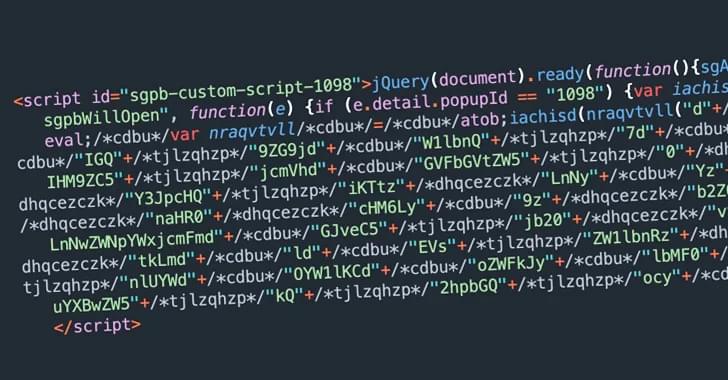Jan 15, 2024
Balada Injector Infects Over 7,100 WordPress Sites Using Plugin Vulnerability
Posted by Shubham Ghosh Roy in categories: biotech/medical, cybercrime/malcode
⚠️ Over 7,100 WordPress sites have been hit by the ‘Balada Injector’ malware, which exploits sites using a vulnerable version of the Popup Builder plugin. Read More ➡️ https://thehackernews.com/2024/01/balada-injector-infects-over-7100.htm
Thousands of WordPress sites using a vulnerable version of the Popup Builder plugin have been compromised with a malware called Balada Injector.
First documented by Doctor Web in January 2023, the campaign takes place in a series of periodic attack waves, weaponizing security flaws WordPress plugins to inject backdoor designed to redirect visitors of infected sites to bogus tech support pages, fraudulent lottery wins, and push notification scams.
Continue reading “Balada Injector Infects Over 7,100 WordPress Sites Using Plugin Vulnerability” »





 עברית (Hebrew)
עברית (Hebrew) The required precision to perform quantum simulations beyond the capabilities of classical computers imposes major experimental and theoretical challenges. The key to solving these issues are highly precise ways of characterizing analog quantum sim ulators. Here, we robustly estimate the free Hamiltonian parameters of bosonic excitations in a superconducting-qubit analog quantum simulator from measured time-series of single-mode canonical coordinates. We achieve the required levels of precision in estimating the Hamiltonian parameters by maximally exploiting the model structure, making it robust against noise and state-preparation and measurement (SPAM) errors. Importantly, we are also able to obtain tomographic information about those SPAM errors from the same data, crucial for the experimental applicability of Hamiltonian learning in dynamical quantum-quench experiments. Our learning algorithm is highly scalable both in terms of the required amounts of data and post-processing. To achieve this, we develop a new super-resolution technique coined tensorESPRIT for frequency extraction from matrix time-series. The algorithm then combines tensorESPRIT with constrained manifold optimization for the eigenspace reconstruction with pre-and post-processing stages. For up to 14 coupled superconducting qubits on two Sycamore processors, we identify the Hamiltonian parameters — verifying the implementation on one of them up to sub-MHz precision — and construct a spatial implementation error map for a grid of 27 qubits. Our results constitute a fully characterized, highly accurate implementation of an analog dynamical quantum simulation and introduce a diagnostic toolkit for understanding, calibrating, and improving analog quantum processors.
The required precision to perform quantum simulations beyond the capabilities of classical computers imposes major experimental and theoretical challenges. The key to solving these issues are highly precise ways of characterizing analog quantum sim ulators. Here, we robustly estimate the free Hamiltonian parameters of bosonic excitations in a superconducting-qubit analog quantum simulator from measured time-series of single-mode canonical coordinates. We achieve the required levels of precision in estimating the Hamiltonian parameters by maximally exploiting the model structure, making it robust against noise and state-preparation and measurement (SPAM) errors. Importantly, we are also able to obtain tomographic information about those SPAM errors from the same data, crucial for the experimental applicability of Hamiltonian learning in dynamical quantum-quench experiments. Our learning algorithm is highly scalable both in terms of the required amounts of data and post-processing. To achieve this, we develop a new super-resolution technique coined tensorESPRIT for frequency extraction from matrix time-series. The algorithm then combines tensorESPRIT with constrained manifold optimization for the eigenspace reconstruction with pre-and post-processing stages. For up to 14 coupled superconducting qubits on two Sycamore processors, we identify the Hamiltonian parameters — verifying the implementation on one of them up to sub-MHz precision — and construct a spatial implementation error map for a grid of 27 qubits. Our results constitute a fully characterized, highly accurate implementation of an analog dynamical quantum simulation and introduce a diagnostic toolkit for understanding, calibrating, and improving analog quantum processors.











